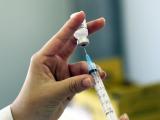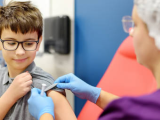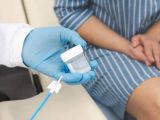Head and neck cancers caused by human papillomavirus (HPV) are dramatically higher in men than in women, with levels in men having already eclipsed the incidence of HPV-related cervical cancer in women, according to a study yesterday in the Annals of Internal Medicine.
To sort out the epidemiology behind the cancer trends, US researchers reported new findings on oral HPV prevalence in men and women, shedding light on sexual, lifestyle, and other factors that may help guide public health interventions.
The researchers based their analysis on adults who took part in the country's National Health and Nutritional Examination Survey from 2011 to 2014, which involved oral rinse, penile, and vaginal swab specimens, along with survey questions.
One in nine men HPV-infected
About one in nine US men are infected with HPV, the group found. The overall prevalence of oral HPV infection was higher in men than in women: 11.5% compared with 3.2%. Cancer-causing HPV strains were more common in men, and the highest-risk type (HPV 16) was six times more common in men.
In people with same-sex partners, high-risk HPV infections were more common in men—12.7% versus 3.6%. The rate climbed to 22.2% in men who had two or more same-sex oral sex partners.
Oral infection among men with concurrent genital HPV infection was four times higher than in men who had oral but not genital infection. The probability of high-risk HPV infection was greater in black participants, heavy smokers, marijuana users, and those who reported 16 or more lifetime vaginal or oral sex partners.
When the investigators looked at patterns by age, they found that HPV 16 was most prevalent in men ages 50 to 69, which they said could suggest that persistent infection from that strain might be driving higher levels of head and neck cancers in that age-group.
The authors said the results confirm that oral HPV is common in US men and that the findings will help guide future oropharyngeal cancer prevention efforts. They noted that research priorities should include improved prevention and screening in high-risk groups.
Puzzles to solve
In an accompanying commentary, Patti Gravitt, PhD, from the Milken Institute School of Public Health at George Washington University, wrote that despite the new in-depth analysis, it's still not clear why oral HPV risk increases with age or why the HPV and oropharyngeal cancer burdens are greater in men.
She said it's difficult to tease out independent effects of age and sexual behaviors or differences across birth cohorts. Studies that could shed more light should focus on acquisition of oral HPV from recent sexual partners, autoinoculation from anogenital sites, latent infections, and natural history of sexually active and inactive adults, she said.
See also:
Oct 16 Ann Intern Med abstract
Oct 16 Ann Intern Med commentary






















